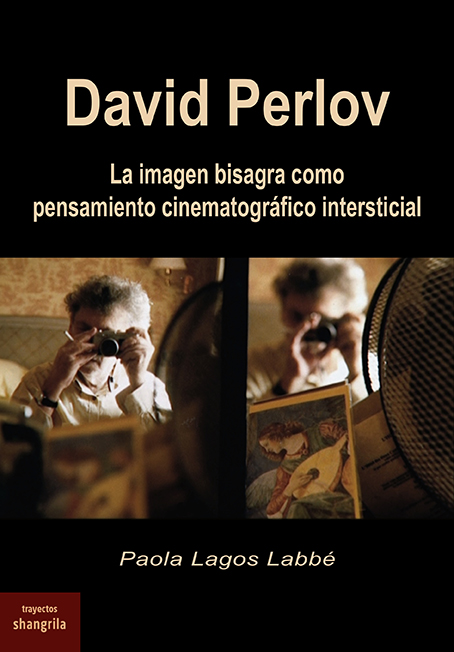David Perlov. La imagen bisagra como pensamiento cinematográfico intersticial

- Year: 2024
- Author: Paola Lagos Labbé
Abstract
After a rich conceptual, aesthetic and historical discussion of the main expressions of self-representational non-fiction cinema –autobiographical documentaries, film-essays, life diaries, travel diaries, letters, self-portraits, among other hybrid forms– the book analyses and reflects on the narrative, visual and sound resources that articulate the totality of the film diaries of the Brazilian-Isarelian filmmaker, photographer and visual artist David Perlov. These essays together form a film-fleuve of nearly ten hours that channels the author's daily experience over fifty years of his life, in a monumental passage that connects his affective and family intimacy, the problematisation of his uprooting and the main war conflicts in which Israel participated during the second half of the twentieth century. In order to modulate his identity fractures and nomadies, Perlov summons a diversity of essayistic strategies that operate on a discursive, aesthetic and political level, and that traverse not only film but also other artistic manifestations, including photography, painting, literature and music. The book aims to interrogate the visual and sound potencies from an interrelational approach capable of examining those practices that formulate a liminal aesthetic characteristic of these diaries.
Based on this approach, the concept of the hinge image will be defined; a device of exploration of an aesthetic and reflexive nature that, through the combination of a heterogeneous set of elements and categories, sets up a system of ideas to mobilise an interstitial essayistic thought around reality and cinema itself. The poetics of the threshold of the hinge image is not only translated into the persistent presence of windows, doors, corridors and other visual motifs that metaphorise the flows between the different universes of representation intertwined in the diaries, but also in those relations and tensions between life and art; self and others; past and present; domestic and political; interior and exterior; microhistory and macrohistory; exile and return; belonging and uprooting; still and moving image; analogue and electromagnetic technologies; sound and meaning; oral and micro-oralities; body, voice and word, to mention only some of the multiple intervals offered by this work of exceptional poetic and political richness and complexity.

